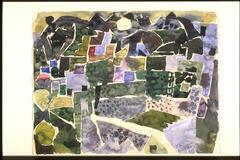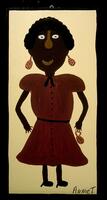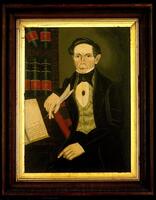Writing With Art: A List of Possibilities
A List of Activities: Writing with Portraits, Landscapes, and Other Images
The following list of activities all involve writing with an Image
Sentence completion
Choose one image and kick off a creative writing piece with starter sentences such as: I am standing . . . I can hear . . . Next to me is . . . It smells like . . . I worry about . . .
Opposites
Find contrasts (color, texture, light, movement) in the image. Make a list and use that as a basis for a poem.
Haiku Snapshot
Capture one moment in time with a concrete image. Write a haiku (5 syllables, 7 syllables, 5 syllables) to capture something in nature or a fleeting emotion from the image. Focus on economy and concise language.
Constructing Meaning
Interpret the intention of the artist by asking questions such as: “What do you notice?” What is happening?” What is the mood?” “What formal choices (light, composition, texture, color, printing) did the artist make?
Movie Script
Use the present tense to write what is occurring now. Begin with the word, “Suddenly . . .”
Explore an Object’s Thoughts
What story would a Greek vase tell? What has a Medieval prayer book witnessed? What does a Yoruba headdress think on the day of the chief’s ceremony?
Zoom In, Zoom Out
Examine an image closely. Zoom in: Choose one specific area and write about it in depth. What is living under the water? What are the distant cowboys discussing? Who is hiking in the forest? Zoom out: Imagine what might lie beyond the canyon. Where does the river flow?
Time Travel
If you went back or forward in time to this place, what would you need to bring? How does it look different from today? Do you need to convey a message to the inhabitants?
Teamwork
Form a group of four people. Assign one image to the group. Assign roles to each member. One: describe the physical place. Two: describe the mood. Three: Create characters who might inhabit or travel to this place. Four: Invent a problem or issue that might occur here. Work together to create one short story.
Compare / Contrast
Choose two images or objects with something essential in common (two landscapes of the same place, two portraits of the same person, two headdresses) and ask students to list differences between the two. How do those differences contribute to the overall impression or meaning of the work? Discuss different ways to organize a comparison essay: block by block or point by point.
Observation Notebook
Make a T-graph on a blank paper. The left column it titled “I see.” The right column is titled “I think." Closely examine one image and complete the observation chart.
Choose One Image and Respond in Multiple Ways
1. Creative response: write a poem or short story inspired by the image
2. Descriptive response: describe the scene as if you were explaining it to a blind person
3. Reflective response: respond to the image with a memory or emotion, as a journal entry
4. Analytical response: use description and reflection to tease out possible analysis. What could the message be? Make an argument for a specific interpretation based on specific visual evidence (horizon line placement, light effects, composition)
Writing with Portraits
Dialogue / Conversation
Select two characters from two portraits. Create a conversation between them. Are they family members? Friends? Enemies? What could they have in common? What might they fight about? What do they wonder? What kind of words would they use? Students can practice dialogue conventions and punctuation while constructing a narrative between similar or very different characters.
Interview
Imagine you are a time-traveling journalist, able to hop to past centuries and interview sitters in portraits. Brainstorm a list of questions you would ask the main character. If possible, research the person and situation before beginning the interview. Then conduct an interview, in Q and A format, imagining how the sitter would respond. Does the conversation flow? Do the questions relate to one another? (adapted from Weisman Art Museum’s educational resources)
Descriptive Details
Pretend you are the sitter’s biographer and want to capture a detailed description of the person for your audience. Describe the sitter’s physical appearance, clothing, location, gestures, props, and any other details that would convey a sense of personality and mood. Write a descriptive paragraph based on these observations, focusing on details.
Characters in Conflict
Conflict and tension creates drama. Review the basic types of conflict: man vs. nature, man vs. man, man vs. supernatural, man vs. self. Students can choose a hero from a historical event and create a written portrait of that hero at the moment of crisis. Show not only her appearance but also emotions and actions
Create a Conflict
Choose two portraits and pit them against each other. What has one done to offend the other? Are they arguing over money? Something that came between their friendship?
Backwards Research
Given only the portrait image, students write as much as they can conjecture about the sitter. Create a full description of who she is, where she is from, interests, occupation, values, and what she may have contributed to culture. Then research the “facts” about her life and compare students’ initial judgments with their research findings. Do they align?
Who Am I Really?
Closely observe a portrait. Write at least five questions about the sitter or the surroundings. Probe the portrait to see if it offers any clues to answer the questions.
Letter
Write a letter in the sitter’s voice, to another character, or to the viewer. What might have happened recently that she would want to share? Would she write, type, or text?
Portrait Poem
Complete the formulaic poem using a variety of verbs: I wonder, I hear, I see, I want, I pretend, I feel, I touch, I fear, I love . . .
Monologue
If you gave the character an identity and a voice, what would s/he say? What concerns her? Use first person, as if you were the sitter. Remember to connect the character’s thoughts to the details in the image and use vocabulary and tone that reflects the character’s background and values. (adapted from Weisman Art Museum’s educational resource)
Writing with Landscapes
Enter the Image
Write song lyrics or a description based on the imaginative space in the image, as if you were there
Weather Forecast
Examine the weather in the image. First describe it, then write a forecast pretending to be a meteorologist.
Write a Postcard
Distribute postcards to students and ask students to write as if they were visiting the place and writing to family at home. Describe the landscape and mood.
Metaphor / Simile
Using an abstract image or landscape, write a comparison to a concrete object, idea, or sensation.
Write a Memory
Display a landscape as a prompt for one specific memory. An urban experience? A family vacation? A camping excursion by the ocean? Write in depth about the senses, smells, emotions, and relationships as they are triggered by this place.
Sensory Setting
Choose one landscape and explore all of your senses. I see, I taste, I smell, I feel, I hear . . .
Part of 1 Learning Collection
<p>Using art to gather information, summarize, para...
<p>Using portraits to describe a narrator's point o...
<p>Using a still life or landscape to write descrip...
<p>Writing a gripping lead and subsequent narrative...
<p>Using portraits and free writing to unlock emoti...
1 Link
Rate this Resource
AVG: 0 | Ratings: 0
& Author Notes
Creative Commons by-nc-saLast Updated
January 2, 2021 11:24 a.m.Report
Reporting Policy





